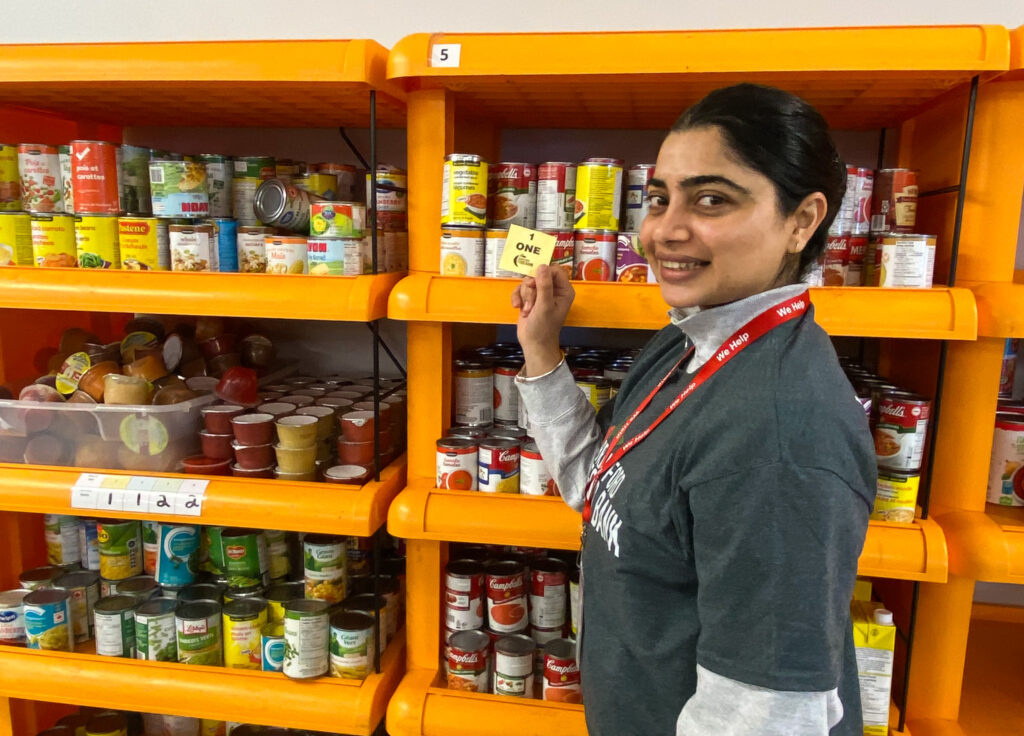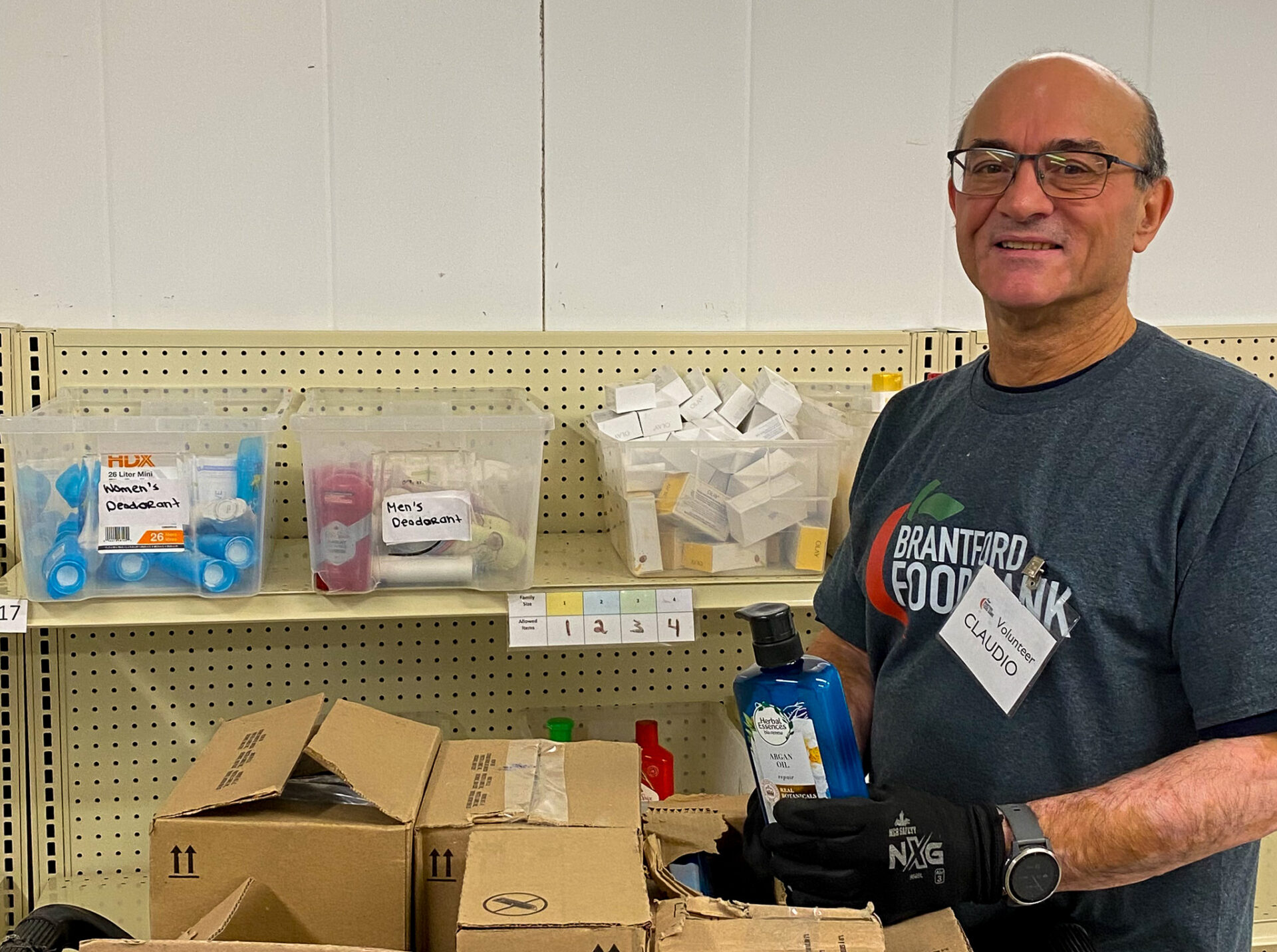Brantford’s Food Bank was first established in 1988 and since then, it has continued to grow and remodel itself to better serve the community throughout the years.
The food bank offers emergency support to individuals and households that are currently experiencing food insecurity throughout the city.
Heather Vanner, Executive Director for the Community Resource Service, says that the organization was created 36 years ago as a response to the economic recession during the time.
“It was started by the labour movement in our community as a response to the recession that really devastated our community in the 1980s,” said Vanner. “A lot of people were thrown out of work at the time, we had major manufacturing businesses shut down and there were massive layoffs.”
Now, the organization provides over one million pounds of food a year to the community and is serving almost 1,200 households every month (over 2,500 people).
She said that when it comes down to it, food is a basic right and need.
“Without food, you don’t live. It comes down to that idea that, people need food to live and to be healthy,” she said. “When you’re in this situation where your food insecure and you don’t always know if you’re going to be able to access the food that you need, it’s important to have a program like ours available to be able to support individuals and families that are that are experiencing that need.”
Vanner said over the years, the food bank has had to adapt to various changes.
“There are a few different things that have happened over the years that have changed the way that we provide food to people and the impact that we’re having,” she said. “First and foremost, one of the things that we do that a lot of people don’t know and it’s changed again, is that we’re not only supporting the people that come through our doors in terms of helping those individuals that are in emergency situations, but we’re also supporting 17 other meal and food programs in our community through our Community Food Share program. As an organization, we’re committed to not only trying to help those people that that need us individually, but also programs that are also trying to address food insecurity.”
She said that when the food bank receives large skid donations of products, and if they can’t use all of it for individuals in the community, they will share the items with other meal and food programs as well.
“We also have a relationship with Feed Ontario and Food Banks Canada, where we receive food donations from across the province, and sometimes we can actually use some of those products to share with other organizations in our communities as well,” she said. “We want to be sure that all organizations that are trying to address this problem, are equipped to have what they need. We can’t always give them exactly what they need, but we definitely feel that it’s important we share what we have and make sure that we’re working together as organizations to try and address the problem.”

Vanner said that another change the food bank has made, is that it’s switched over to a grocery store model.
“Before, we were packing boxes for individuals and families based on their family size and then we would offer extras like milk and bread as well. When I first started in 2002, we were providing about a two-to-three-day supply of food, and now we’re trying to provide a three-to-five-day supply of food if we have it available. But we also want to ensure people have dignity in receiving this service,” she said. “Rather than pre-packing boxes, we’ve now established our food bank to operate in a grocery store model where people can come in, and while there’s still limitations based on their family size, they can come and select some of the products to take home.”
She said this ensures that people can select items they know their family will use and consume, especially when it comes to dietary restrictions.
“We’re trying to provide the gift of choice to individuals that are coming in to use our service because they know what they need from a health perspective,” said Vanner. “If we have those things available for them based on our supply at the time, they at least have a bit of freedom to be able to choose some of those things that they need.”
Vanner noted that the COVID-19 pandemic brought more awareness to the organization, garnering more food and monetary donations, allowing them to alter how they work on a daily basis.
“Something that changed was the community awareness aspect,” she said. “I think through COVID people began to become a little more aware of the need, and started to understand just how quickly a person’s situation can change and how they may need a service like ours. It also grew both our food and monetary donations which is what helped us switch over to that grocery store model we have today.”
She said despite the awareness, the food bank is currently facing high demand.
“The number of individuals and families that we’re helping has jumped. With the price of food, housing and the cost of living, we’ve seen a large increase in the number of people that need our service,” said Vanner. “A lot of households are really assessing how they eat, what they eat, and where they shop. Depending on your income, you may have the luxury to be able to pay these higher prices, but some people don’t have that all and they may be in a situation where they’re just scraping by to be able to get a few groceries for the week. With the price of food now, it’s almost become cost prohibitive to eat, so where do they go and what do they do? That’s what we’re here for, is to try and help those individuals who are really struggling to ensure they have what they need.”
She said that while they are always grateful to see an increase in donations during the holidays, hunger doesn’t just stop once it hits January.
“Christmas is a period where we see the community really come together and help us a lot, and I think the one thing I would say, is that is the need doesn’t end on December 31. There’s always a need and going into the new year there are people still coming in needing support, and we need the community’s support just as much,” she said. “I don’t think food banks are as temporary as we thought when they first started. We’re here as a part of the social safety net to ensure people have what need and if we can get support from the community all year long, that’s going to make sure everyone is helped.”
Vanner also noted that the food bank is part of a larger organization called the Community Resource Service.
“Not only do we provide the emergency support of a food bank, but we also provide employment programs and longer-term support. So, we’re trying to help people break out of their situation when they’re ready and wanting to find employment,” she said. “Our employment program is part of Ontario’s Employment Programs and Services, and we can help provide people with one-on-one support, helping with resumes and cover letters, and taking a look at what their needs are. Maybe they’re applying for work and aren’t always successful in an interview, our employment specialist can work with them to determine what they can change to get them back on track.”
The larger organization also has an income tax program where they support individuals in completing their tax forms for the season.
Vanner said that for those looking for more information on how to tap into these resources, or to learn more in general, she encourages them to give the organization a call at 519-751-4357.
Kimberly De Jong’s reporting is funded by the Canadian government through its Local Journalism Initiative.The funding allows her to report rural and agricultural stories from Blandford-Blenheim and Brant County. Reach her at kimberly.dejong@brantbeacon.ca.
